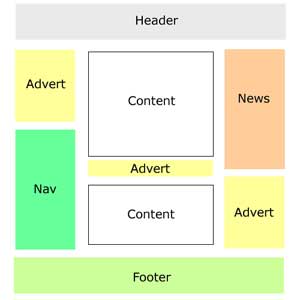Algorithms (part 2)
Search engine algorithms are a highly guarded secret, what we do know will enable the separation of fact from fiction. It is known that Google, Yahoo and MSN use certain algorithms, but the composition of those algorithms is only known to the designers and an elite few. To make it clearer, most of the data contained within this section on algorithms and techniques to combat algorithms are a mixture of testing, discussion, science and fiction. Summed up, they are a very precise guess.
The main algorithms (or equivalent) that search engines use in part or whole, which are a dependant factor of linking are:
- Latent Semantic Indexing
- Blockrank
- Pagerank
- Local Rank
Below is a basic and brief outline of each:
Latent Semantic Indexing (LSI)
Latent Semantic Indexing (LSI) relies on the constituent terms within a document to suggest the document's semantic content. However, the LSI model views the terms within a document as somewhat unreliable indicators of the overall concepts contained within. It assumes that the variety of word choice partly obscures the semantic structure of the document. By reducing the dimensionality of the term-document space, the underlying semantic relationships between documents are revealed, and much of the ‘noise’ (differences in word usage and terms that don’t help distinguish documents clearly) is eliminated. LSI statistically analyses the patterns of word usage across the entire document collection, placing documents with similar word usage patterns near each other in the term-document space, and allowing semantically-related documents to be near each other even though they may not share terms.
Basically, the algorithm will remove common words (noise) that are used to construct a sentence, such as: and, as, then, the, seen, to, too, etc. Once it has done this, it will take the remaining words and interpret the common denominators, at which point it may remove more words. Remaining will be a group of words from which to determine their semantic connectivity, for example: golf, golf shoes, golf clubs, golf course, etc. If there are other meaning terms left to analyse, then this is where the semantic correctness of a page can be confused and the search engine derives a meaning other than intended for the page.
More information is provided later in the article to combat semantic correctness.
Blockrank
Blockrank is better expressed within a diagram, to demonstrate how an algorithm may statistically analyse a page uniquely, and pass merit /demerit points to it accordingly, for further analysis in conjunction with other algorithms. The diagram below outlines how a search engine may view a given page structure, and assign it “points” for a better term.

As you can see from the above image, the page is segregated into “blocks”, which is how the search engines will analyse it. The actual layout on a page by page basis is irrelevant, as the search engine algorithm will still segregate the page into its appropriate “blocks” on an individual page basis. The algorithm will then analyse each “block”, its content and any internal hyperlinks to determine its weight or merit. Further detail will be provided later within this article.
For example purposes, the weighting for the above diagram could be represented as:
Header = 2 points
Footer = 0.5 points
Adverts = 0.1 points each
News = 0.5 points
Navigation = 0.7 points
Content = 6 points combined
A total of 10 points has been assigned to the page, and broken up over the blocks appropriately. As you can see, most of the pages blocks are given next to nothing, with the exception of the header and content. These are generally the two areas within a page less likely to find spam. If the entire page was written solely for advertisement, then the page may be weighted, and then removed entirely from the index or algorithm. Thus any links placed upon the page actually do not hold any weight, as the entire page has been zeroed, for a better term.

